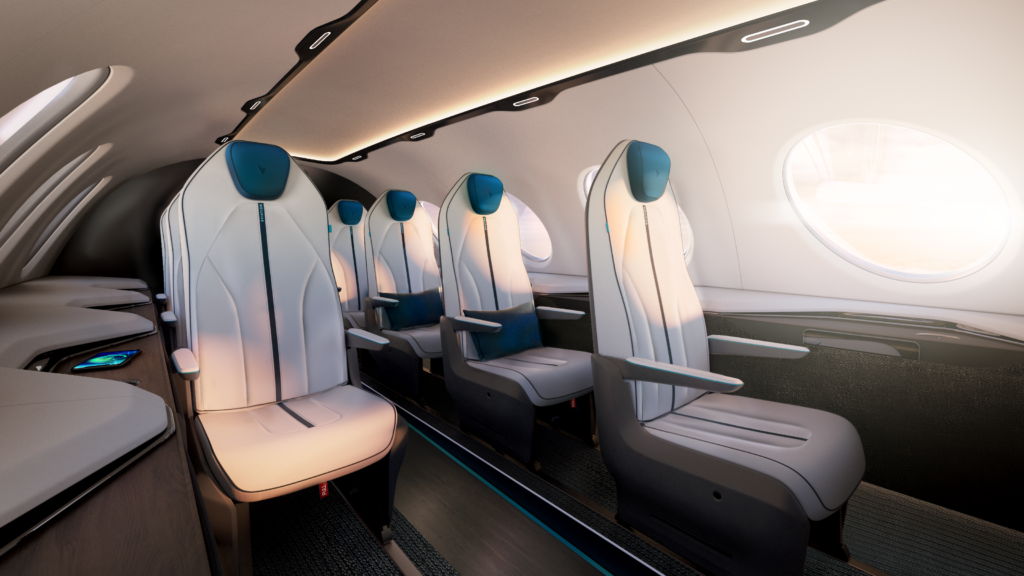The electric aircraft passenger experience. What can we expect to see?
Share
Yesterday Swedish company Heart Aerospace made a major announcement. This involved investments from Saab and Air Canada, a firm aircraft order from Air Canada and the unveiling of a new aircraft, the 30 seat ES-30, which will now go into production in place of the previous 19 seat ES-19.
At the same time, United and Mesa confirmed their commitment to order 200 aircraft with an option for 100 more.

With this industry vote of confidence, it’s fair to say that among all the different electric, hybrid-electric and hydrogen aircraft start-ups, Heart’s ES-30 is a good bet to be in commercial service by the target date of 2028.
What will the passenger experience be like?
In his presentation, Heart Aerospace CEO Anders Forslund gave an overview of what to expect when flying the ES-30:
The ES-30 will seat 30 passengers in a 2+1 seating configuration, with a standard 30 inch pitch. It features a fully pressurised cabin, a standing aisle and overhead bins for small personal items.
Passengers flying on the ES-30 will be able to take the industry standard of 25kg of luggage.
Anders Forslund said that there was the “option” of a gallery and WC at the front of the aircraft, so some carriers may decide to dispense with at least the former if it’s a short commuter route.
This comes as the electric powertrain has a range of 200km, but if the turbine engines are used (Anders Forslund called this reserve-electric as opposed to hybrid-electric technology), the range extends to 400km.
So, for the average passenger the experience will be much like it is in small regional aircraft today in terms of seat pitch and storage.
A key difference is noise.
Of course one thing passengers will notice is how quiet the aircraft is. The electric motors ensure low noise in-flight and take off and an almost silent taxi. That has implications for local communities, where noise is a factor, as well as for the passenger experience.
Partners confirmed so far for the ES-19 are Aernnova (for the air frame), Latecoere (the doors), Garmin (avionics) and MSB for the interiors.
Speaking to Actual News Magazine, Billy Darveau, director of engineering at MSB, talked about the challenges of accounting for weight on a hybrid-electric aircraft such as the ES-30.
The Eviation Alice – wireless chargers, electrochromatic shades
Another electric aircraft close to test flight is the Eviation Alice. This includes a nine seat commuter version that has gained pre-orders from Cape Air in Massachusetts and Global Crossing Airlines in Florida among others.
The Alice will offer SkyView panoramic windows, with individually controlled electrochromatic shades, and seats with a 32 inch pitch.

When the Points Guy took a look at a prototype of the cabin last year, he complimented the side-mounted wireless smartphone chargers, the touch enabled reading lights and the 1-1 configuration.
The look of the Alice itself is also very sleek and distinctive, according to co-founder Omer Bar-Yohay, the design and weight is what allows the Alice to operate on battery power.
Of course, the Alice is a smaller aircraft, and it is pitched for commuter and sub-regional routes.
For actual regional routes, the current limitations of battery technology mean that hybrid-electric aircraft such as from Heart Aerospace, or hydrogen-electric conversions (such as from ZeroAvia) will be the main regional zero or low emission aircraft we can expect to see in service over the next decade.


